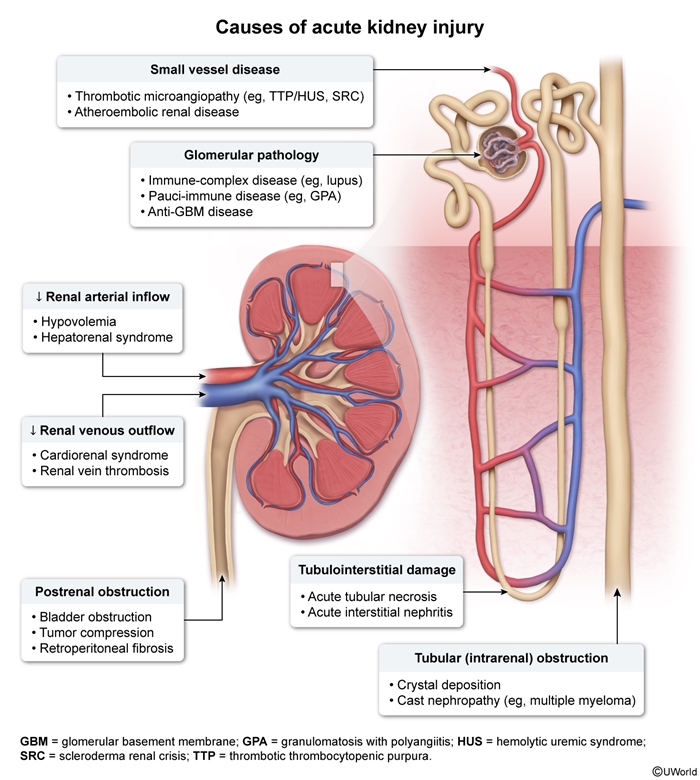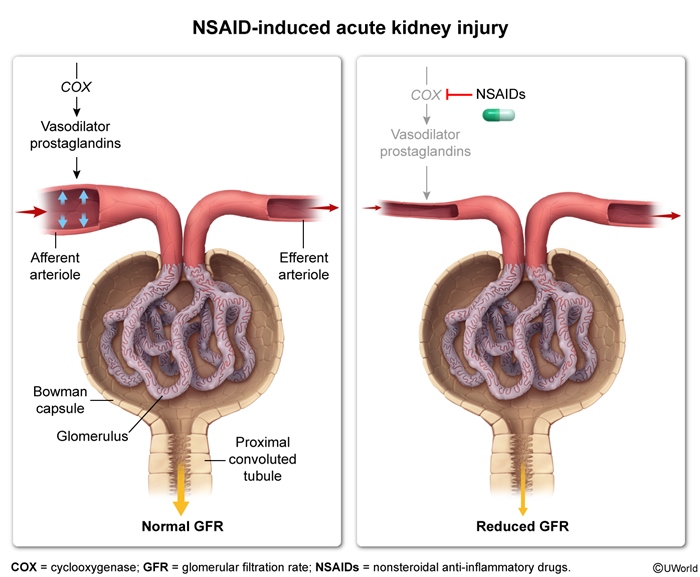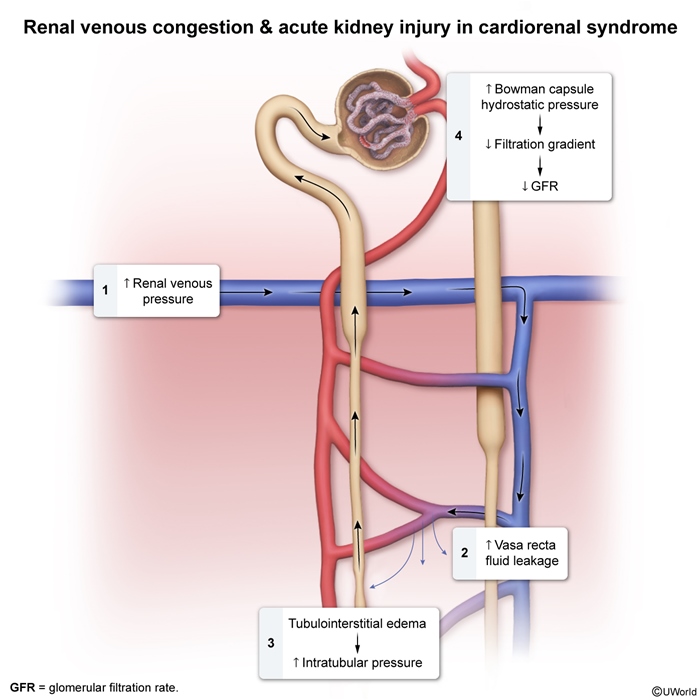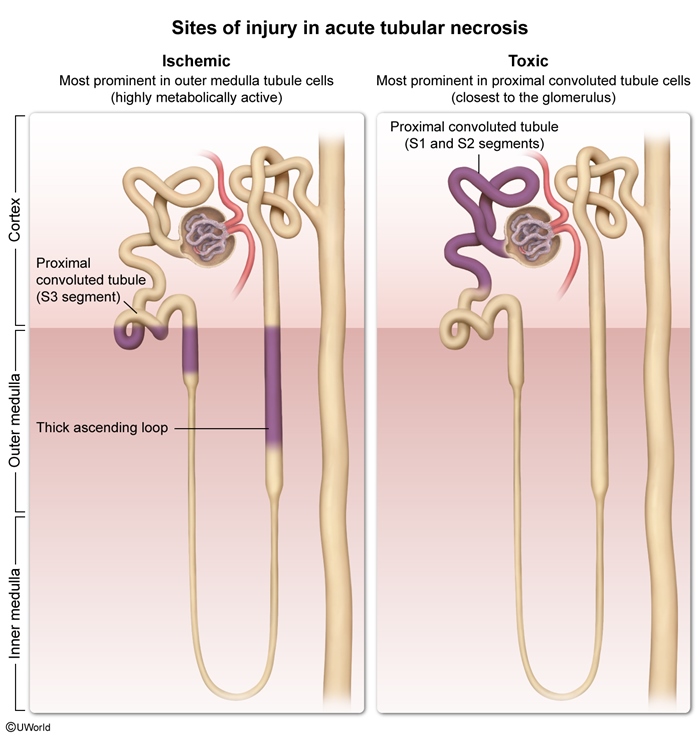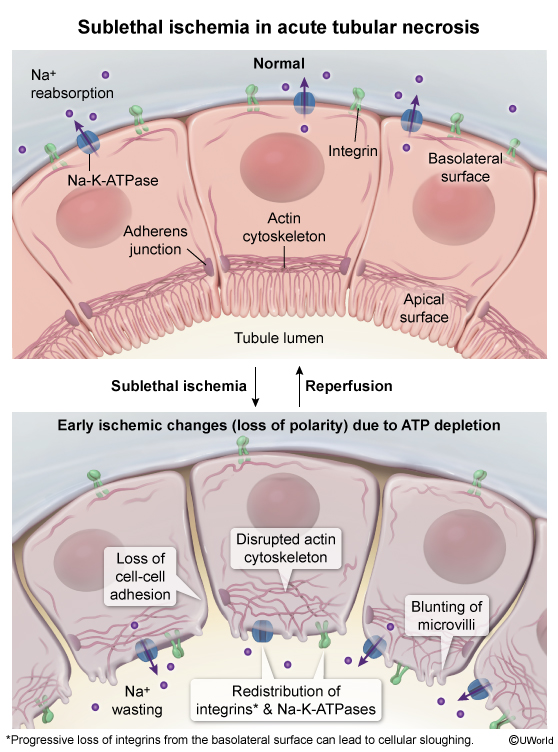Acute Kidney Injury
Article Sections
Introduction
The kidneys filter waste products, maintain fluid and electrolyte balance, and regulate blood pressure. These functions can be disrupted in patients with acute kidney injury (AKI) or chronic kidney disease (CKD).
- AKI involves a sudden, often reversible, decline in renal function; it can be classified as oliguric (ie, decreased urine output) or nonoliguric (ie, preserved urine output).
- In contrast, CKD is characterized by a progressive, irreversible deterioration of kidney function over months or years (discussed in a separate article).
This article provides an overview of AKI. Early recognition and management of AKI are important to prevent a further decline in renal function and possible progression to CKD.
Pathophysiology and etiologies
AKI involves a rapid decline in kidney function (ie, glomerular filtration rate [GFR]) over hours to days, leading to waste product accumulation and possible electrolyte imbalances with fluid overload. AKI is categorized into the following 3 categories:
Continue Learning with UWorld
Get the full Acute Kidney Injury article plus rich visuals, real-world cases, and in-depth insights from medical experts, all available through the UWorld Medical Library.
Figures
